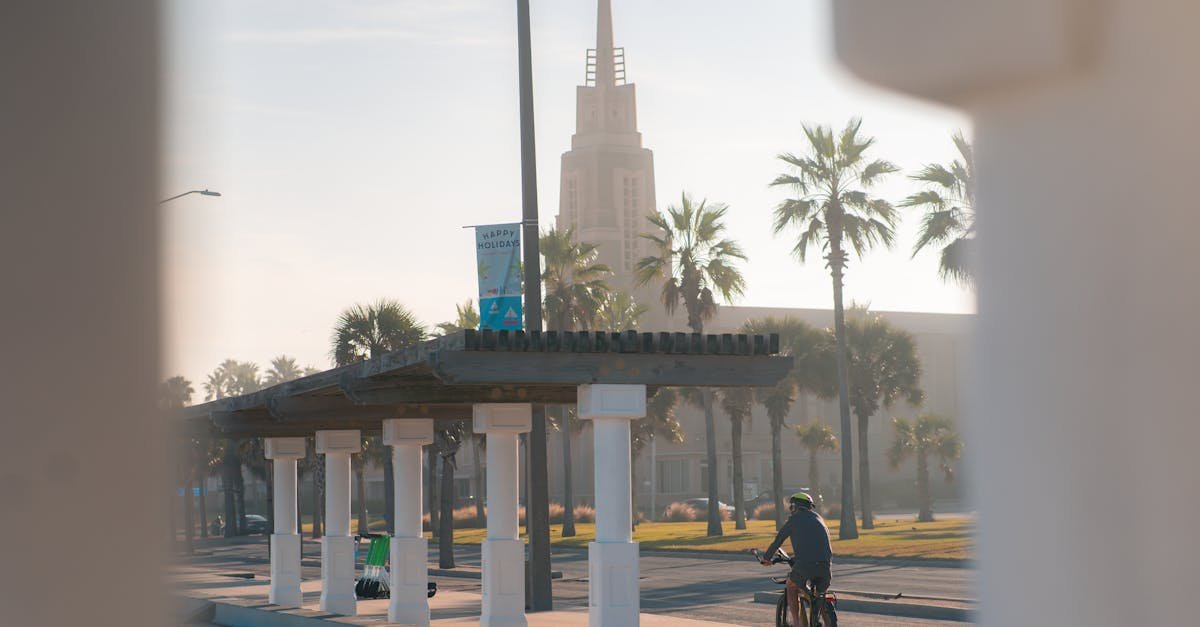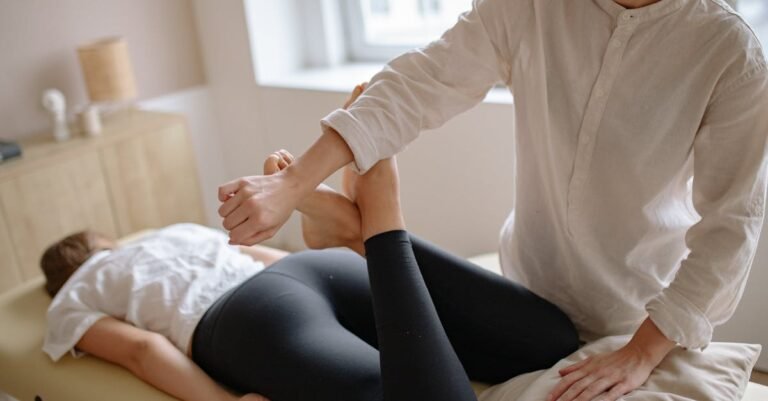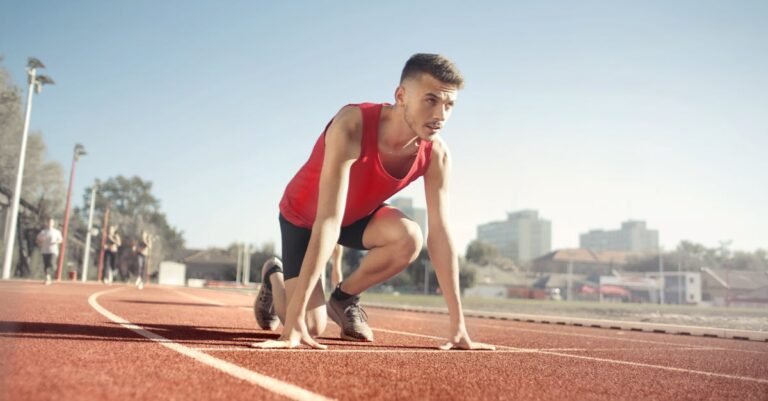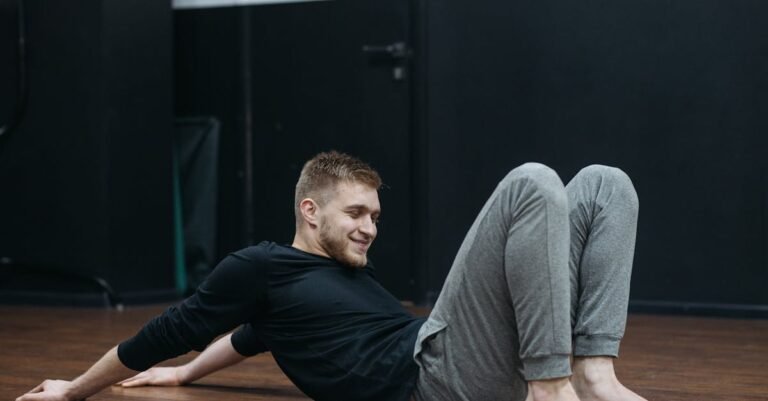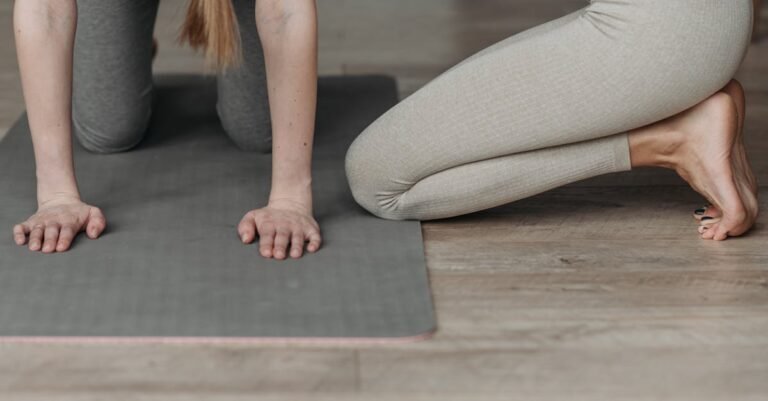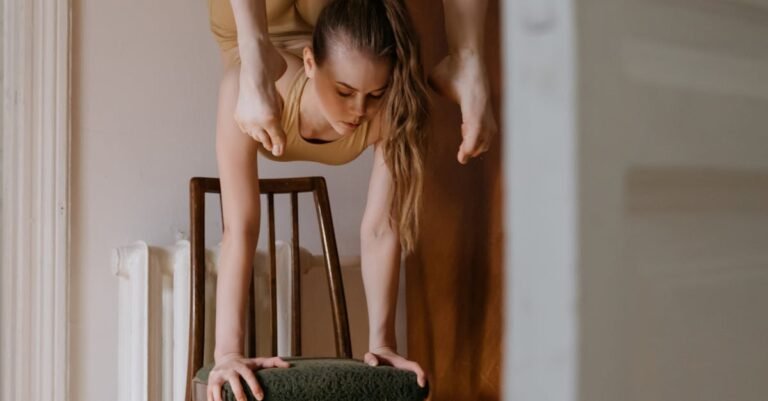Table of Contents
- Cycling For Fitness: Beginner Tips To Get You Rolling
- Why Choose Cycling for Your Fitness Journey?
- Getting Started: Your First Steps
- Your First Rides: Building Confidence and Stamina
- Leveling Up Your Cycling Fitness
- Staying Safe on the Road (or Trail)
- Listening To Your Body: Recovery and Nutrition
- Conclusion: Embrace the Journey
- Frequently Asked Questions (FAQs)
Cycling For Fitness: Beginner Tips To Get You Rolling
So, you’re thinking about cycling for fitness? Awesome choice! Remember that feeling of freedom when you first learned to ride a bike as a kid? Wind in your hair (or helmet!), exploring the neighborhood, feeling like you could go anywhere? Well, guess what? You can recapture that feeling, and get incredibly fit in the process. Cycling isn’t just for Tour de France athletes or hardcore mountain bikers; it’s an accessible, enjoyable, and seriously effective way for absolutely anyone to boost their health and fitness.
But where do you start? It can seem a bit daunting, right? What kind of bike do you need? What gear is essential? How far should you go? Don’t sweat it! We’ve all been there. This guide is your friendly companion, designed to take you from curious beginner to confident cyclist. We’ll break down everything you need to know, step by step, without the confusing jargon. Ready to pedal your way to a healthier, happier you? Let’s roll!
Why Choose Cycling for Your Fitness Journey?
Okay, let’s talk about why cycling is such a fantastic fitness option, especially for beginners. There are tons of ways to get active, so what makes hopping on a bike stand out?
Low Impact, High Reward
One of the biggest advantages of cycling is that it’s incredibly kind to your joints. Unlike running or high impact aerobics, which can put a lot of stress on your knees, hips, and ankles, cycling is smooth and fluid. Your feet are supported by the pedals, and the movement is circular, minimizing jarring impacts. This makes it a brilliant choice if you’re carrying a few extra pounds, recovering from certain injuries, or just find other forms of cardio uncomfortable. You get a fantastic cardiovascular workout – strengthening your heart and lungs – without pounding the pavement. Think of it like swimming on land; you get the fitness benefits without the harsh impact. It’s a sustainable way to exercise regularly without wearing your body down unnecessarily.
More Than Just Leg Day: Full Body Benefits?
Sure, cycling is famous for building strong quads, hamstrings, and glutes (hello, toned legs!). But is it just a leg workout? Not entirely! While your legs are definitely the prime movers, cycling engages more muscles than you might think. Your core muscles (abdominals and back) work hard to stabilize your body, especially when you’re climbing hills or riding out of the saddle. Maintaining balance also requires subtle adjustments from muscles throughout your torso. Even your arms and shoulders get a bit of a workout supporting your upper body and steering. While it won’t give you bulging biceps, it contributes to overall muscle engagement and tone. It’s a coordinated effort, making it a more well rounded activity than it initially appears.
The Mental Boost: Cycling and Your Mind
Let’s not forget the incredible benefits for your brain! Exercise, in general, is a known mood booster, releasing those feel good endorphins. Cycling, however, adds another layer. Being outdoors, exploring new routes, feeling the sun and wind – it’s a fantastic stress reliever. It allows you to disconnect from daily worries and focus on the simple act of pedaling and observing your surroundings. It can be meditative, helping to clear your head and improve focus. Plus, achieving cycling goals, whether it’s riding your first 10 miles or conquering a challenging hill, provides a huge sense of accomplishment and boosts self confidence. It’s physical fitness and mental wellness rolled into one enjoyable package.
Getting Started: Your First Steps
Alright, convinced that cycling is the way to go? Brilliant! Now for the practical stuff. Getting started involves a couple of key decisions: choosing your trusty steed (the bike!) and gathering some essential gear.
Choosing Your Ride: What Kind of Bike Do You Need?
Walking into a bike shop can feel overwhelming. So many options! Don’t panic. The “best” bike is the one that suits your needs and where you plan to ride most often. Let’s break down the main types for beginners:
Road Bikes vs. Hybrid Bikes vs. Mountain Bikes
- Road Bikes: These are built for speed and efficiency on paved surfaces. They have lightweight frames, skinny tires, and drop handlebars that allow for a more aerodynamic riding position. If your primary goal is fitness riding on roads and paved paths, and you value speed, a road bike might be for you. However, the riding position can take some getting used to, and they aren’t ideal for rough surfaces.
- Mountain Bikes (MTB): Designed for off road trails, mountain bikes have sturdy frames, wide, knobby tires for grip, and suspension (front or full) to absorb bumps. They offer an upright riding position. While great for trails, they can feel slow and sluggish on paved roads due to the tire resistance. If you plan on tackling dirt paths and rough terrain, an MTB is the way to go.
- Hybrid Bikes: Often the sweet spot for beginners! As the name suggests, hybrids blend features of road and mountain bikes. They typically have flat handlebars like an MTB for a comfortable, upright position, but smoother, slightly wider tires than a road bike. This makes them versatile – comfortable enough for roads and bike paths, but capable of handling light gravel or park trails. For general fitness riding, commuting, and exploring various terrains, a hybrid is usually an excellent starting point.
Think honestly about where you’ll ride 90% of the time. Don’t buy a hardcore mountain bike if you’ll only ever ride on smooth bike paths. A hybrid is often the most practical and comfortable choice for newcomers focusing on fitness.
Don’t Forget Bike Fit!
This is crucial, yet often overlooked by beginners. An improperly fitting bike is uncomfortable, inefficient, and can even lead to injury. It’s not just about standover height (whether you can straddle the top tube). It’s about saddle height, handlebar reach, and overall geometry. A good bike shop will help you find the right frame size and make adjustments to the saddle and handlebars to ensure you’re in a comfortable and powerful position. Don’t just buy a bike online based on a generic size chart if you’re unsure. Getting a basic fit from a knowledgeable person makes a world of difference to your enjoyment and performance. Think of it like buying shoes – you wouldn’t buy hiking boots two sizes too small, right? Same principle applies here.
Essential Gear for Beginner Cyclists
You’ve got the bike! Now, what else do you absolutely need before you hit the road?
The Non Negotiables: Helmet & Lights
- Helmet: This is non negotiable. Seriously. Your brain is kind of important! Always, always, always wear a helmet when cycling. Make sure it fits snugly, sits level on your head (not tilted back), and the straps are properly adjusted. Modern helmets are lightweight, well ventilated, and could save your life. Don’t skimp here.
- Lights: Even if you only plan to ride during the day, lights are essential for visibility. A bright white front light and a flashing red rear light make you significantly more noticeable to drivers and other road users. In many places, they are legally required after dark or in poor visibility conditions. Being seen is paramount to staying safe.
Comfort is Key: Padded Shorts & Gloves
- Padded Shorts (Bibs or Shorts): Okay, let’s talk about saddle soreness. It’s a common beginner complaint. Padded cycling shorts (with a built in chamois pad) make a HUGE difference in comfort, especially on longer rides. They reduce friction and provide cushioning where you need it most. Trust me on this one; they might look a bit funny off the bike, but your behind will thank you.
- Cycling Gloves: Padded gloves absorb road vibration, reducing hand numbness and fatigue. They also protect your palms in case of a fall. A worthwhile small investment for added comfort.
Staying Hydrated and Fueled
- Water Bottle and Cage: Dehydration zaps your energy fast. Most bikes have mounts for water bottle cages. Get at least one cage and a cycling specific water bottle that’s easy to grab and drink from while riding. For rides over an hour, hydration becomes critical.
- Small Snacks: For rides pushing past 60 to 90 minutes, you’ll need to replenish energy. Carry easily digestible snacks like energy bars, gels, or even a banana. We’ll talk more about nutrition later, but having something on hand is wise.
Other useful items include a small saddle bag for tools (like a spare tube, tire levers, multi tool), a pump (a small frame pump or CO2 inflator), and maybe a cycling computer or phone mount for navigation and tracking your rides. But start with the essentials: helmet, lights, water, and consider the comfort items early on.
Your First Rides: Building Confidence and Stamina
Okay, gear sorted, bike ready – it’s time for the fun part: actually riding! The key here is to ease into it. Don’t try to conquer a mountain on day one.
Start Slow, Go Short
Your first few rides should be all about getting comfortable on the bike and enjoying the experience. Aim for short durations, maybe 20 to 30 minutes, at an easy, conversational pace. What’s a conversational pace? It means you should be able to chat comfortably without gasping for breath. Don’t worry about speed or distance initially. Focus on smooth pedaling, getting used to the feel of the bike, braking gently, and shifting gears (if you haven’t ridden a geared bike before, practice this on a flat, quiet stretch). The goal is to build positive associations with cycling, not to exhaust yourself immediately. Think gentle stroll, not frantic sprint.
Finding Beginner Friendly Routes
Where you ride makes a big difference to your initial confidence. Look for:
- Dedicated Bike Paths: These are often paved, relatively flat, and separated from car traffic – ideal for beginners.
- Quiet Residential Streets: Roads with low traffic volume and slow speed limits can be good options once you’re comfortable handling the bike.
- Parks with Paved Loops: Many parks offer safe, scenic loops perfect for getting started.
Avoid busy roads with fast traffic or complex intersections until you feel much more confident and understand traffic laws for cyclists. Use online tools like Google Maps (with the cycling layer enabled), Strava’s Route Builder (using the heatmap feature to see popular routes), or Komoot to find suitable local routes.
Mastering Basic Bike Handling Skills
Beyond just pedaling in a straight line, practice these skills in a safe, open area (like an empty parking lot):
- Starting and Stopping Smoothly: Practice clipping in/out if using clipless pedals, or just getting your feet down smoothly. Apply brakes evenly (both front and rear, gently at first).
- Turning: Practice leaning gently into turns, looking where you want to go. Start with wide turns and gradually tighten them.
- Shifting Gears: Learn how your gears work. Practice shifting before you *need* to (like before a hill, not halfway up it!). Shift while pedaling gently.
- Looking Behind You: Practice glancing over your shoulder quickly without swerving. This is crucial for checking traffic.
- Emergency Braking: Know how hard you can brake without skidding or going over the handlebars (shift your weight back).
These fundamental skills build confidence and make you a safer, more capable cyclist.
Leveling Up Your Cycling Fitness
You’re comfortable, you’re enjoying your rides, and you’re feeling the fitness bug bite! Now, how do you progress and start seeing even bigger fitness gains?
Gradually Increasing Distance and Duration
The most straightforward way to progress is simply to ride a bit longer or further. Don’t make huge leaps, though. A good rule of thumb is the 10% rule: try not to increase your total weekly mileage or the duration of your longest ride by more than about 10% per week. For example, if your longest ride this week was 60 minutes, aim for around 66 minutes next week. If your total weekly riding was 3 hours, aim for about 3 hours and 20 minutes the following week. This gradual increase allows your body to adapt without overwhelming it, reducing the risk of burnout or injury. Listen to your body; if you feel overly fatigued, take an extra rest day or scale back slightly.
Introducing Intensity: Hills and Intervals
Riding longer at an easy pace builds endurance, but adding intensity is key for boosting cardiovascular fitness and burning more calories.
- Hills: Don’t fear the hills; embrace them! They are natural interval training. Find a route with some rolling hills or one moderate climb. Focus on maintaining a steady effort going up (shift into an easier gear!) and enjoy the recovery on the way down. Hill repeats (riding up a hill, coasting down, and repeating) are a fantastic workout once you’re ready.
- Intervals: This involves alternating periods of higher intensity effort with periods of recovery. On a flat road, you could try:
- Warming up for 10-15 minutes.
- Riding hard (breathing heavily, but controlled) for 1 minute.
- Riding easy (recovery pace) for 2 minutes.
- Repeating this 4-6 times.
- Cooling down for 10 minutes.
As you get fitter, you can increase the duration of the hard effort or decrease the recovery time. Even just adding a few faster sections into your regular rides makes a difference.
Introduce intensity gradually, maybe once a week to start.
Consistency is Your Superpower
This might be the most important tip of all. Riding sporadically – a long ride one weekend, then nothing for two weeks – won’t build fitness effectively. It’s far better to ride consistently, even if the rides are shorter. Aim for 2-3 rides per week initially, and try to stick to that schedule. Consistency allows your body to adapt, build muscle memory, improve efficiency, and steadily increase its fitness level. Life happens, and you might miss a ride occasionally, but try to establish a routine that works for you. It’s the regular effort, week after week, that truly transforms your fitness.
Staying Safe on the Road (or Trail)
Fitness gains are fantastic, but staying safe while achieving them is paramount. Cycling involves sharing space with others, whether it’s cars, pedestrians, or other cyclists.
Rules of the Road for Cyclists
In most places, bicycles are considered vehicles, and you have the same rights and responsibilities as drivers. This means:
- Obey Traffic Signals and Signs: Stop at red lights and stop signs. Yield when required.
- Ride with Traffic: Ride on the right side of the road, in the same direction as traffic flow. Never ride against traffic.
- Use Hand Signals: Signal your intentions clearly before turning or stopping. Use standard hand signals (left arm straight out for left turn, left arm bent up at elbow or right arm straight out for right turn, left arm bent down for stop/slow).
- Be Predictable: Ride in a straight line; don’t swerve unexpectedly. Make eye contact with drivers when possible, especially at intersections.
- Lane Positioning: Generally, ride far enough to the right to allow faster traffic to pass, but not so close to the curb that you risk hitting debris or the curb itself. In some situations (like approaching an intersection or if the lane is too narrow to share), it’s safer to “take the lane” by riding closer to the center of the lane to be more visible and prevent unsafe passing. Know your local laws regarding lane positioning.
Understanding and following the rules makes you predictable and safer.
Be Seen, Be Heard
Visibility is your best defense.
- Lights (Again!): Use them day and night. Flashing modes are often more eye catching during the day.
- Bright/Reflective Clothing: Especially in low light conditions (dawn, dusk, rain, fog), wear bright colors (fluorescent yellow/green/pink are great). Reflective accents on clothing, shoes, and the bike itself significantly increase nighttime visibility.
- Make Eye Contact: Try to make eye contact with drivers at junctions to ensure they’ve seen you.
- Bell or Voice: While not always legally required, a bell can be useful for alerting pedestrians on shared paths. A polite “On your left!” when passing other cyclists or pedestrians is also good practice.
Assume you might be invisible and do everything you can to stand out.
Listening To Your Body: Recovery and Nutrition
Pushing yourself is part of getting fitter, but ignoring your body’s signals is a recipe for injury or burnout. Recovery and proper fueling are just as important as the riding itself.
The Importance of Rest Days
Your muscles don’t get stronger *during* the ride; they get stronger during the recovery period *after* the ride. Rest days allow your body to repair muscle tissue, replenish energy stores, and adapt to the training stress. Skipping rest days, especially when you’re starting out, can lead to overtraining, fatigue, and increased risk of injury. Plan for at least 1-2 complete rest days per week, or incorporate “active recovery” days – very light activity like a gentle walk or stretching. Listen for signs of overdoing it: persistent fatigue, unusual muscle soreness, trouble sleeping, decreased motivation. If you feel these, take an extra rest day. It’s not lazy; it’s smart training!
Fueling Your Rides (and Recovery)
What you eat and drink directly impacts your performance and recovery.
- Hydration: Drink water throughout the day, not just during rides. For rides over an hour, especially in warm weather, consider an electrolyte drink to replace salts lost through sweat. Aim to sip frequently during your ride.
- Before the Ride: Have a carbohydrate rich snack or small meal 1 2 hours before riding to top up energy stores. Avoid heavy, fatty, or high fiber foods right before you head out. A banana, oatmeal, or toast are good options.
- During the Ride (Over 60-90 mins): Aim for 30-60 grams of carbohydrates per hour. This can come from sports drinks, energy gels, energy bars, or real food like bananas or dates. Experiment to see what digests well for you.
- After the Ride: Refuel within 30-60 minutes of finishing your ride to kickstart recovery. Aim for a mix of carbohydrates (to replenish glycogen stores) and protein (to repair muscle). Chocolate milk is a surprisingly effective and popular recovery drink! A balanced meal soon after is also important.
Don’t overcomplicate it initially, but be mindful of staying hydrated and getting some fuel in, especially around longer rides.
Conclusion: Embrace the Journey
Whew! That might seem like a lot, but remember the core message: cycling for fitness is incredibly rewarding and accessible. Start simple, focus on consistency, prioritize safety and comfort, and listen to your body. Don’t compare yourself to experienced cyclists you see whizzing past; focus on your own progress and enjoyment. Celebrate the small victories – riding a little further, conquering that small hill, feeling your energy levels increase. Cycling isn’t just about reaching a destination; it’s about the journey itself. The fresh air, the scenery, the sense of accomplishment, the positive impact on your physical and mental health – these are the real rewards. So, pump up those tires, strap on your helmet, and get ready to discover the joy and fitness benefits of cycling. You’ve got this!
Frequently Asked Questions (FAQs)
FAQ 1: How often should a beginner cycle?
Answer: Consistency is more important than intensity initially. Aim for 2 to 3 rides per week when you’re just starting out. This allows your body time to adapt and recover between sessions. Start with shorter rides (20 30 minutes) and gradually increase the duration as you feel more comfortable. Listen to your body – if you feel good, you might add another short ride, but don’t push too hard too soon.
FAQ 2: Can I lose weight just by cycling?
Answer: Absolutely! Cycling is a fantastic calorie burner. The exact amount depends on intensity, duration, and your body weight, but even moderate cycling can contribute significantly to a calorie deficit needed for weight loss. Combine regular cycling with a balanced, healthy diet for the best results. Remember, it burns calories and builds muscle, which further boosts your metabolism.
FAQ 3: Do I need expensive cycling clothes?
Answer: No, you don’t need a full pro kit to start. The most important piece is a good helmet. Padded cycling shorts are highly recommended for comfort, especially as you start riding longer distances, but you can start with comfortable athletic wear. Breathable fabrics are better than cotton (which holds sweat). As you ride more, you might invest in jerseys with pockets and cycling specific shoes, but they aren’t essential on day one.
FAQ 4: What’s the biggest mistake beginners make?
Answer: One of the most common mistakes is doing too much, too soon. Trying to ride too far, too fast, or too often right at the beginning can lead to burnout, injury, or simply make cycling feel like a chore rather than fun. Start slow, increase gradually, prioritize consistency over heroic efforts, and listen to your body’s signals for rest.
FAQ 5: Is indoor cycling as effective as outdoor cycling?
Answer: Indoor cycling (on a stationary bike or trainer) can be incredibly effective for fitness. It allows for controlled, structured workouts regardless of weather or time of day. You can easily focus on intervals or maintain specific heart rate zones. While you miss the outdoor elements (scenery, fresh air, bike handling practice), it’s a great way to build cardiovascular fitness, strength, and maintain consistency, especially during bad weather or winter months. Many cyclists use a mix of both.

